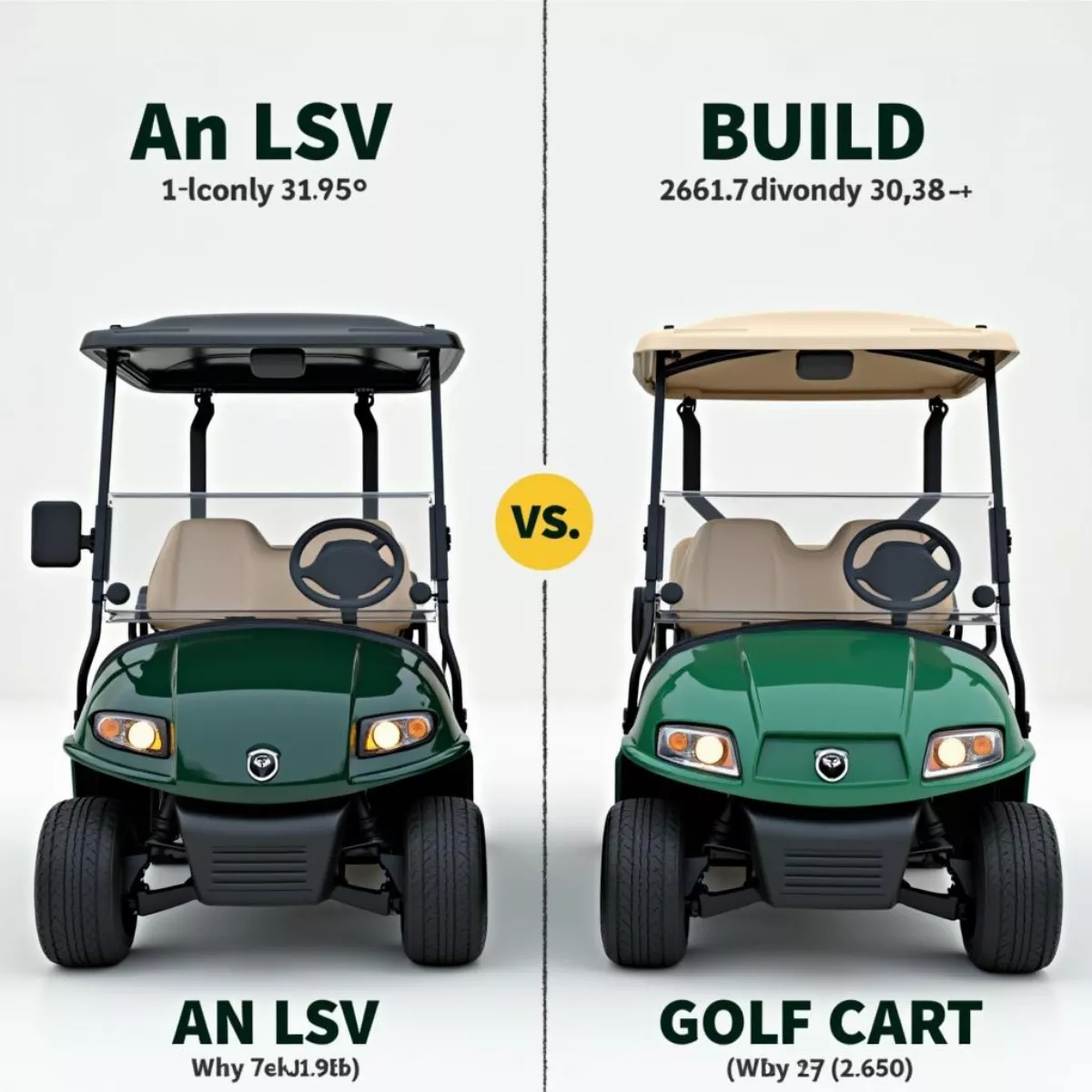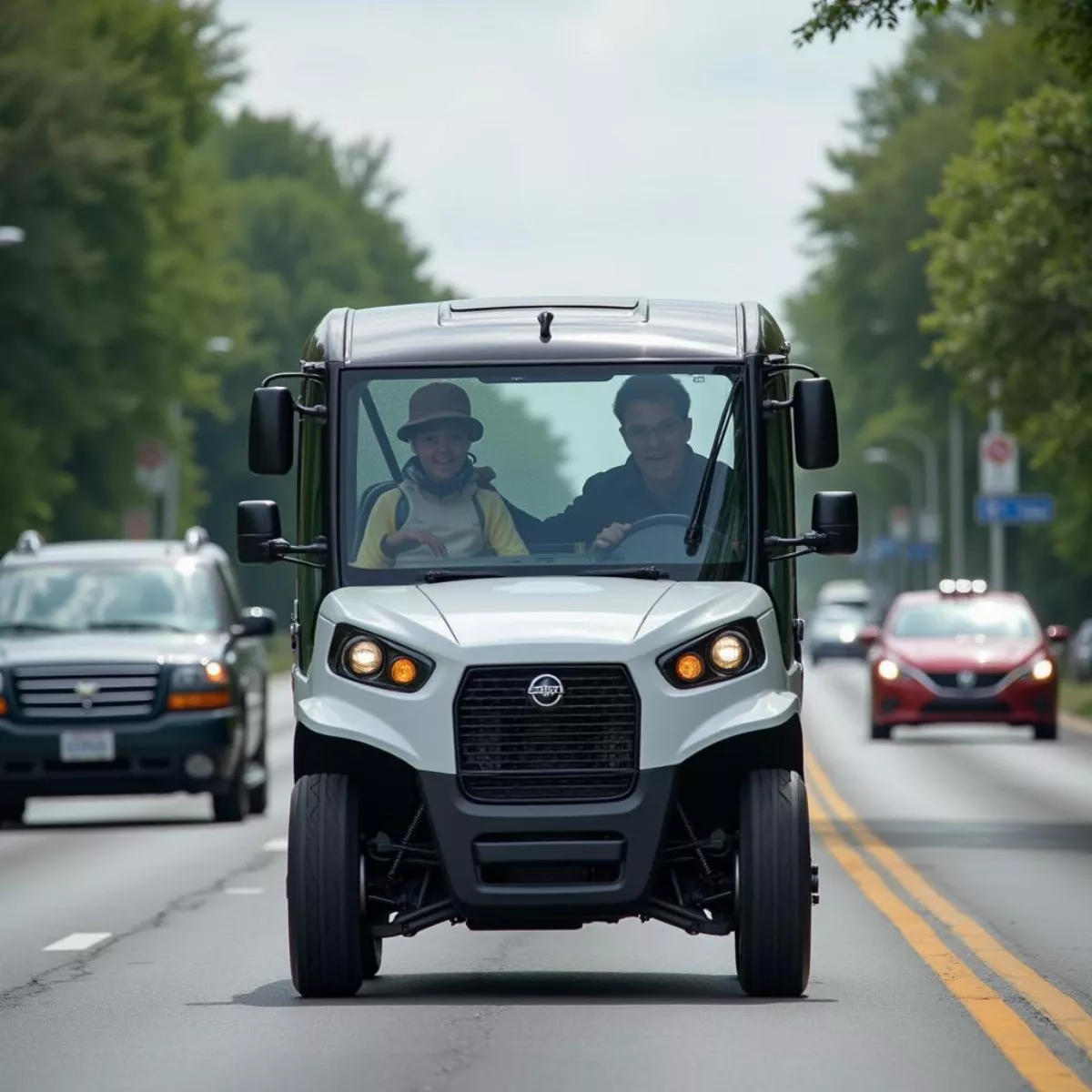When it comes to getting around your neighborhood or local golf course, two popular options are low speed vehicles (LSVs) and golf carts. Understanding the differences, features, and benefits of each can greatly affect your decision-making process.
This article will explore these two transportation options in detail, helping you make an informed choice that best fits your needs.
The Basics: What Are LSVs and Golf Carts?
Low Speed Vehicles (LSVs)
Low speed vehicles (LSVs) are defined by the U.S. Department of Transportation as four-wheeled vehicles that can reach a maximum speed of 25 mph on paved roads. They come equipped with features similar to traditional cars, including:
- Seat belts
- Headlights and taillights
- Turn signals
- Windshields
Characteristics of LSVs:
- Capable of handling various terrains, including city roads.
- Generally have more horsepower than golf carts.
- Often used for short trips in urban environments.
Golf Carts
Golf carts are lightweight vehicles designed primarily for use on golf courses. They typically reach speeds of 15 mph or less and are less robust than LSVs. However, as the name implies, they are excellent for navigating the greens.
Characteristics of Golf Carts:
- Designed specifically for golf courses but may also be used in gated communities.
- Usually have a simpler design, but many are customizable.
- Not typically street-legal, although some regions allow modified golf carts to be driven on local roads.
Key Differences
Speed and Power
When comparing LSVs and golf carts, one of the most noticeable differences is their speed and power:
| Feature | Low Speed Vehicles (LSVs) | Golf Carts |
|---|---|---|
| Maximum Speed | Up to 25 mph | Up to 15 mph |
| Horsepower | Generally higher | Generally lower |
Usage and Legal Requirements
Legal standards and allowable uses differ for both vehicle types:
- LSVs:
- Often permitted on roads with a speed limit of 35 mph or less.
- May be subject to state licensing requirements and registration.
- Golf Carts:
- Mostly restricted to golf courses and private areas, although some regions allow public road use after modifications.
- Often don’t require a driver’s license or registration.
Safety Features
Safety is crucial when it comes to vehicle choices. Here’s how these two options compare:
- Low Speed Vehicles: Feature seat belts, proper lighting, and often other safety components like rearview mirrors.
- Golf Carts: May have limited safety features and often lack seat belts and safety lights, although some modern models are equipped with enhanced features.
Cost and Maintenance
Another critical area to consider is cost:
| Feature | Low Speed Vehicles (LSVs) | Golf Carts |
|---|---|---|
| Initial Cost | Typically more expensive than golf carts | Generally cheaper |
| Maintenance Cost | Higher due to more complex systems | Lower due to simplicity |
 LSV and Golf Cart Comparison
LSV and Golf Cart Comparison
Which One is Right for You?
Choosing between LSVs and golf carts ultimately depends on your specific needs and requirements. Here are some factors to consider:
- Neighborhood Type:
- If you live in an area with wider streets and are looking for a vehicle for short commutes, an LSV may be more practical.
- If you’re primarily focused on playing golf or mobility within a retirement community, a golf cart might suffice.
- Safety Considerations:
- LSVs are a safer option if you plan to drive on roads with other vehicles.
- Golf carts are ideal for slower-paced environments but lack safety features.
- Budget Constraints:
- Golf carts typically come with a lower upfront cost and maintenance expense but offer limited functionality.
- LSVs generally require a larger investment, but they also provide more versatility and capability.
Pros and Cons at a Glance
Low Speed Vehicles (LSVs)
Pros:
- Versatile for road use
- Higher speed capability
- More safety features
Cons:
- Higher purchase and maintenance costs
- Potential legal complexities
Golf Carts
Pros:
- Lower cost and maintenance
- Simple and easy to operate
- Great for specific uses (golf, gated communities)
Cons:
- Limited speed and power
- Not generally street-legal
 LSV on the Road
LSV on the Road
Key Takeaways
- Understand Your Needs: Consider your daily requirements, neighborhood, and activities before choosing.
- Compare Speed and Power: LSVs are faster and more capable than golf carts, suitable for varied terrains.
- Consider Safety Features: Opt for LSVs for enhanced safety, especially if driving on public roads.
- Assess Costs: Golf carts are generally less expensive, but LSVs offer greater versatility and range.
FAQ Section
1. Can I drive a golf cart on public roads?
In some areas, modified golf carts can be driven on public roads, but it is essential to check local laws.
2. What is the maximum speed for a low-speed vehicle?
LSVs can reach speeds of up to 25 mph.
3. Do I need a driver’s license for an LSV?
Yes, most states require a valid driver’s license to operate an LSV on public roads.
4. Are golf carts safe for transportation?
While golf carts can be safe for short-distance travel, they usually lack many safety features found in LSVs.
5. What are the maintenance costs for these vehicles?
Golf carts typically have lower maintenance costs compared to LSVs due to their simplified systems.
6. Can I customize a golf cart?
Yes, many golf carts can be personalized with various accessories and features.
7. Are LSVs environmentally friendly?
Many LSVs come in electric versions, making them more environmentally friendly than traditional gas-powered vehicles.
8. What type of battery is best for golf carts?
Lead-acid batteries are common, but lithium batteries are becoming increasingly popular due to their longevity and efficiency.
9. Can LSVs handle off-road conditions?
While LSVs do perform well on some terrains, they are primarily optimized for road use.
10. What factors impact the cost of insurance for LSVs and golf carts?
Factors include the value of the vehicle, driving history, and local insurance regulations. LSVs usually have higher premiums due to their added features and speed capabilities.
 Golf Cart on a Golf Course
Golf Cart on a Golf Course
Conclusion
In conclusion, the choice between low speed vehicles and golf carts ultimately hinges on your specific lifestyle needs and preferences. By understanding the key differences, safety features, operational requirements, and costs involved, you can make an informed decision that best suits your routine. Whether you opt for the versatility of an LSV or the simplicity of a golf cart, both offer a unique and efficient way to navigate your surroundings.
Feel free to explore our related articles for more information or tips for maximizing your vehicle experience!